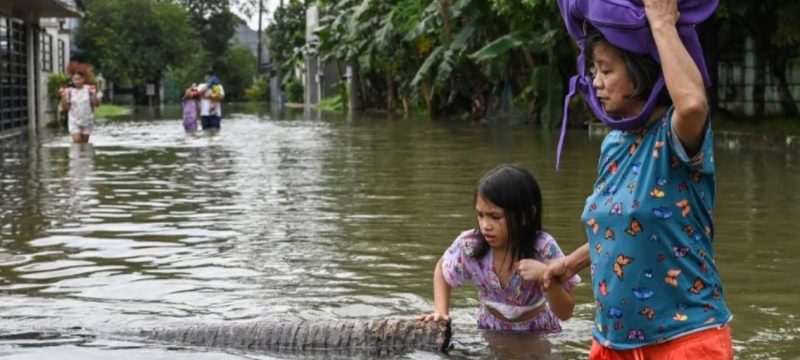Tropical Storm Trami has caused widespread destruction in the northern Philippines, with the death toll now reaching 76. Homeowners have been busy clearing debris from their properties, while rescuers are searching through thick mud for those still missing.
The storm unleashed torrential rain, dropping two months’ worth of precipitation in just two days, displacing tens of thousands of people. “Many are still trapped on the roofs of their homes and asking for help,” reported Andre Dizon, police director for the affected Bicol region. Despite the rain stopping, access for rescuers remains challenging due to landslides and heavily saturated ground.
Also Read: Storm Approaches as Floods in the Philippines Claim 9 Lives and Leave Others Trapped on Roofs
In the town of Laurel, near volcanic Lake Taal, reporters observed blocked roads, submerged vehicles, and damaged homes. Residents shared harrowing experiences, noting they were fortunate the flooding occurred during the day, as many believe they would have perished had it happened at night.
As Trami moves west over the South China Sea, the death toll continues to rise. In Batangas province alone, 43 fatalities have been confirmed, with Laurel and neighboring towns accounting for the majority. The province’s police chief reported significant challenges due to thick mud and debris.
President Ferdinand Marcos acknowledged the struggles in reaching affected areas, particularly in the Bicol region, where numerous casualties were reported. While government offices and schools remained closed across Luzon, storm surge warnings have been lifted.
Evacuations have affected nearly 320,000 people, with rescuers using boats to reach residents stranded on rooftops. The search for a missing fisherman remains suspended due to hazardous conditions.
The Philippines is no stranger to tropical storms, with an average of 20 storms and typhoons hitting the region annually, often resulting in significant damage and loss of life. Recent studies indicate that climate change may be causing storms to form closer to coastlines and to intensify rapidly.









